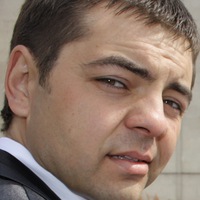https://facebook.com/298276320198577_2747863391906512
Этот предприниматель теперь приезжает в офис только за деньгами — вот как он вышел из «операционки». Потребовалось 8 лет для этого.
— Когда я открыл бизнес, мне приходилось постоянно торчать на работе, забыть об отдыхе и развлечениях и мечтать, что когда-то я смогу меньше работать. Только за 8 лет проб и ошибок, тестирования структур мне удалось добиться цели. Вот шаги, по которым можно повторить мой опыт.
1. Написал матрицу процессов
Взял лист бумаги начал расписывать все процессы, которые происходят в парке, а также дописывал их, когда получал новые знания. На фото можно посмотреть, что получилось, а в увеличенном размере изучить по ссылке https://realtimeboard.com/app/board/o9J_kzvurNw=/
Совет. Представьте идеальный путь, который должен пройти клиент от просмотра рекламы вашего товара или услуги до повторной покупки. Обратите внимание — именно повторной. Я изучал лидеров на рынке, компании, которые также занимаются услугами и лучшее внедрял у себя. Этот процесс беспрерывный. Но знайте, что все сделать идеально с первого раза не получится.
2. Объединил процессы по отделам
Критерием для объединения я выбрал компетенции сотрудников: маркетинг, продажи, найм персонала, производство (товара или услуги), обучение, административные процессы (бухгалтерия, юридические вопросы и т.д.).
Совет. В небольших компаниях обычно не хватает людей, чтобы распределить каждую функцию отдельному человеку — придется совмещать. Например, сначала сам закрывал продажи, административные процессы и найм, остальное делегировал. Когда достигал результатов, отдавал другие обязанности. Самыми последними делегировал продажи и маркетинг, а финансы до сих пор курирую лично.
3. Распределил процессы по ролям
Именно по ролям, а не человеку. Не должно остаться свободных процессов. Это делается, чтобы вы смогли найти ответственного, если процесс был не выполнен. И чтобы не слушать «я не знал», «мне никто не сказал», «это не я должен делать».
Например, роль консультанта:
https://probusiness.io/management/4974-etot-predprinimatel-teper-priezzhaet-v-ofis-tolko-za-dengami-vot-kak-on-vyshel-iz-operacionki.html
Совет. Вы должны понимать, на каком этапе находитесь:
Дезорганизация. Когда не можете найти ответственного за задачу, если ее не выполнили
Беспорядок. Когда человек признает, что эта задача была в его области ответственности, но он ее не выполнил
Порядок. Когда все понимают, за что отвечают, находятся там, где им положено, и делают то, что должны
Так вот, чтобы перейти от дезорганизации к порядку, нужно ввести последовательность действий. Сделать так, чтобы не осталось процессов, которые не прикреплены ни к одной из роли.
Далее по ссылке.
(Илья РАбченок)
Как выйти из операционной деятельности. Опыт Сергея Громова
Этот предприниматель теперь приезжает в офис только за деньгами — вот как он вышел из «операционки». Потребовалось 8 лет для этого.
— Когда я открыл бизнес, мне приходилось постоянно торчать на работе, забыть об отдыхе и развлечениях и мечтать, что когда-то я смогу меньше работать. Только за 8 лет проб и ошибок, тестирования структур мне удалось добиться цели. Вот шаги, по которым можно повторить мой опыт.
1. Написал матрицу процессов
Взял лист бумаги начал расписывать все процессы, которые происходят в парке, а также дописывал их, когда получал новые знания. На фото можно посмотреть, что получилось, а в увеличенном размере изучить по ссылке https://realtimeboard.com/app/board/o9J_kzvurNw=/
Совет. Представьте идеальный путь, который должен пройти клиент от просмотра рекламы вашего товара или услуги до повторной покупки. Обратите внимание — именно повторной. Я изучал лидеров на рынке, компании, которые также занимаются услугами и лучшее внедрял у себя. Этот процесс беспрерывный. Но знайте, что все сделать идеально с первого раза не получится.
2. Объединил процессы по отделам
Критерием для объединения я выбрал компетенции сотрудников: маркетинг, продажи, найм персонала, производство (товара или услуги), обучение, административные процессы (бухгалтерия, юридические вопросы и т.д.).
Совет. В небольших компаниях обычно не хватает людей, чтобы распределить каждую функцию отдельному человеку — придется совмещать. Например, сначала сам закрывал продажи, административные процессы и найм, остальное делегировал. Когда достигал результатов, отдавал другие обязанности. Самыми последними делегировал продажи и маркетинг, а финансы до сих пор курирую лично.
3. Распределил процессы по ролям
Именно по ролям, а не человеку. Не должно остаться свободных процессов. Это делается, чтобы вы смогли найти ответственного, если процесс был не выполнен. И чтобы не слушать «я не знал», «мне никто не сказал», «это не я должен делать».
Например, роль консультанта:
https://probusiness.io/management/4974-etot-predprinimatel-teper-priezzhaet-v-ofis-tolko-za-dengami-vot-kak-on-vyshel-iz-operacionki.html
Совет. Вы должны понимать, на каком этапе находитесь:
Дезорганизация. Когда не можете найти ответственного за задачу, если ее не выполнили
Беспорядок. Когда человек признает, что эта задача была в его области ответственности, но он ее не выполнил
Порядок. Когда все понимают, за что отвечают, находятся там, где им положено, и делают то, что должны
Так вот, чтобы перейти от дезорганизации к порядку, нужно ввести последовательность действий. Сделать так, чтобы не осталось процессов, которые не прикреплены ни к одной из роли.
Далее по ссылке.
(Илья РАбченок)
Как выйти из операционной деятельности. Опыт Сергея Громова
https://facebook.com/298276320198577_2747863391906512
This entrepreneur now comes to the office only for money - this is how he got out of the OS. It took 8 years for this.
- When I started a business, I had to hang around at work all the time, forget about leisure and entertainment and dream that someday I would be able to work less. In only 8 years of trial and error, testing structures, I managed to achieve the goal. Here are the steps by which to repeat my experience.
1. Wrote a process matrix
He took a piece of paper and began to paint all the processes that take place in the park, and also finished them when he received new knowledge. In the photo you can see what happened, and in an enlarged size, study the link https://realtimeboard.com/app/board/o9J_kzvurNw=/
Tip. Imagine the ideal path that a client must go from viewing an advertisement for your product or service to a repeat purchase. Pay attention - it is repeated. I studied the leaders in the market, companies that also engage in services and implement the best at home. This process is continuous. But know that it’s impossible to do everything perfectly the first time.
2. Combined processes by departments
The criterion for the association I chose the competencies of employees: marketing, sales, hiring personnel, production (of goods or services), training, administrative processes (accounting, legal issues, etc.).
Tip. In small companies, usually there are not enough people to distribute each function to an individual person - you will have to combine it. For example, first he closed sales, administrative processes and hiring, the rest was delegated. When he achieved results, he gave other responsibilities. The latest delegated sales and marketing, and finance is still personally supervised.
3. Distributed processes by roles
It is by roles, not by man. There should be no free processes. This is done so that you can find the person responsible if the process was not completed. And in order not to listen to “I did not know,” “Nobody told me,” “I must not do this.”
For example, the role of a consultant:
https://probusiness.io/management/4974-etot-predprinimatel-teper-priezzhaet-v-ofis-tolko-za-dengami-vot-kak-on-vyshel-iz-operacionki.html
Tip. You must understand what stage you are at:
Disorganization. When you cannot find the person responsible for the task, if it has not been completed
A mess. When a person admits that this task was in his area of responsibility, but he did not fulfill it
Order. When everyone understands what they are responsible for, they are where they are supposed to, and they do what they should
So, to go from disorganization to order, you need to enter a sequence of actions. Make sure that there are no processes that are not attached to any of the roles.
Further on the link.
(Ilya Rabchenok)
How to get out of operational activities. The Experience of Sergey Gromov
This entrepreneur now comes to the office only for money - this is how he got out of the OS. It took 8 years for this.
- When I started a business, I had to hang around at work all the time, forget about leisure and entertainment and dream that someday I would be able to work less. In only 8 years of trial and error, testing structures, I managed to achieve the goal. Here are the steps by which to repeat my experience.
1. Wrote a process matrix
He took a piece of paper and began to paint all the processes that take place in the park, and also finished them when he received new knowledge. In the photo you can see what happened, and in an enlarged size, study the link https://realtimeboard.com/app/board/o9J_kzvurNw=/
Tip. Imagine the ideal path that a client must go from viewing an advertisement for your product or service to a repeat purchase. Pay attention - it is repeated. I studied the leaders in the market, companies that also engage in services and implement the best at home. This process is continuous. But know that it’s impossible to do everything perfectly the first time.
2. Combined processes by departments
The criterion for the association I chose the competencies of employees: marketing, sales, hiring personnel, production (of goods or services), training, administrative processes (accounting, legal issues, etc.).
Tip. In small companies, usually there are not enough people to distribute each function to an individual person - you will have to combine it. For example, first he closed sales, administrative processes and hiring, the rest was delegated. When he achieved results, he gave other responsibilities. The latest delegated sales and marketing, and finance is still personally supervised.
3. Distributed processes by roles
It is by roles, not by man. There should be no free processes. This is done so that you can find the person responsible if the process was not completed. And in order not to listen to “I did not know,” “Nobody told me,” “I must not do this.”
For example, the role of a consultant:
https://probusiness.io/management/4974-etot-predprinimatel-teper-priezzhaet-v-ofis-tolko-za-dengami-vot-kak-on-vyshel-iz-operacionki.html
Tip. You must understand what stage you are at:
Disorganization. When you cannot find the person responsible for the task, if it has not been completed
A mess. When a person admits that this task was in his area of responsibility, but he did not fulfill it
Order. When everyone understands what they are responsible for, they are where they are supposed to, and they do what they should
So, to go from disorganization to order, you need to enter a sequence of actions. Make sure that there are no processes that are not attached to any of the roles.
Further on the link.
(Ilya Rabchenok)
How to get out of operational activities. The Experience of Sergey Gromov

У записи 4 лайков,
1 репостов,
177 просмотров.
1 репостов,
177 просмотров.
Эту запись оставил(а) на своей стене Илья Рабчёнок

























